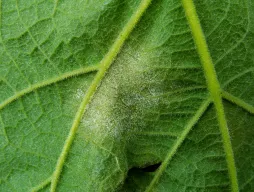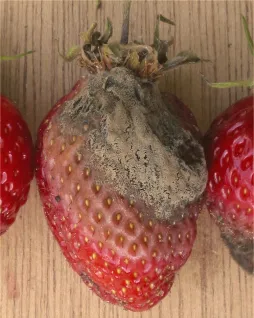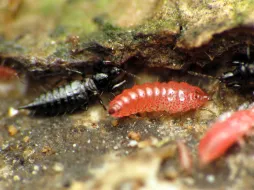Begonia erythrophylla, a flowering indoor begonia
While Doctor Frankenstein was assembling his terrible creature, other, slightly less mad scientists were creating new varieties of Begoniaceae. By crossing two Mexican species, Begonia hydrocotylifolia and Begonia manicata, they created Begonia erythrophylla. Nicknamed Begonia water lily because of its evergreen foliage, the plant is also attractive for its flowers.
How to recognize Begonia erythrophylla, the water-lily begonia?
Begonia erythrophylla grows to 30 to 40 centimetres tall. It is a rhizomatous perennial with a bushy, creeping habit.
Hairy stems and petioles support round, fleshy leaves. Shiny, they are dark green with light-green veins on the upper surface. The underside is purple. Blades are also covered with a fine down.
Begonia erythrophylla flowers at the end of winter. It is much more decorative than Begonia masoniana or Begonia rex. Long flower stems emerge above the foliage. They host pink or white flowers with rounded petals.
But Begonia erythrophylla can only be appreciated with the eyes! The plant is toxic to both animals and humans. It causes irritation, vomiting and stomach ache when ingested.
Our maintenance tips
Water-lily Begonias are not very difficult to care for. All they need is a bright spot and regular watering.
Watering
Water when the surface of the substrate is dry, using room-temperature, non-calcareous water. If you can, use rainwater. If you don't have rainwater, water with mains water that has been left to stand.
After watering, empty any stagnant water from the saucer. It could rot the roots.
Spray
Your water Lily Begonia hates wet foliage. You must not mist the plant.
Repotting
Every spring, repot your Begonia ×erythrophylla to give it more space.
Water-lily Begonias like wide, shallow containers. But they still need to be pierced to allow water to drain out.
Line your pot with a drainage layer (clay balls or gravel), followed by a mixture of peat moss and leaf compost. Plant your specimen in the center, tamp and water.
To improve ambient humidity, you can place your Water-lily Begonia on a dish filled with moist clay pebbles.
Fertilization
To promote the growth of your Begonia ×erythrophylla, apply fertilizer in spring and summer.
Apply a liquid fertilizer for green plants. Respect the doses indicated by the manufacturer on the packaging. Too high a dose will damage foliage.
Cleaning
When dust accumulates on the leaves, the plant slows down its photosynthesis process and its growth. To keep your Begonia ×erythrophylla healthy, clean its foliage with a damp, clean cloth.
Water-lily Begonias are toxic plants. Wash your hands after touching your plant, or wear gloves when handling it.
Prune
Cut the flower stems flush once the flowers have faded, and remove dead leaves as you go along.
Use a clean, sharp tool to prevent the spread of disease and promote healing.
Use a clean, sharp tool to prevent the spread of disease and promote healing.
Pinch
Pinch your Begonia ×erythrophylla during its growing season.
Pinching improves branching. When new leaves appear, take them between your fingers. Section the leaf with your fingernails.
Cutting
You can take cuttings all year round.
Locate a healthy leaf. Remove it, with part of its petiole. Use a clean, sharp tool to avoid spreading disease.
Get a tub or a bowl. The bottom must be perforated. Line your container with a drainage layer (gravel or clay balls) and then with substrate. A mixture of sand and peat is best.
Using a pencil, make a pilot hole in the soil. Plant your cutting by burying the petiole, right down to the base of the leaf. It should be in contact with the soil. Press down and water with a bulb or sprayer.
After one or two months, you'll see the first seedlings appear.
Diseases / Threats
Information
| Family | Begonias - Begoniaceae |
| Type | Begonia - Begonia |
| Species | Water-lily Begonia - Begonia ×erythrophylla |
| Lifecycle | Perennial |
| Foliage | Evergreen |
| Exposures | |
| Substrat | |
| Planting method |
In pots |
| Categories | |
| Tags |
Flowery Toxic |
| Origin |
Central America |
| Hardiness (USDA) | 11a |
| Leaf color |
|
| Flower colors |
|
Discover plants from the same family

Begonia maculata
Discover
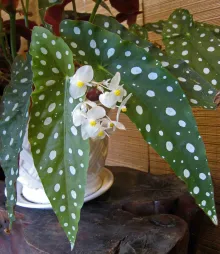
Begonia maculata 'Wightii'
Discover
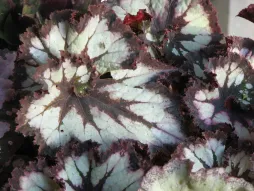
Royal Begonia
Discover
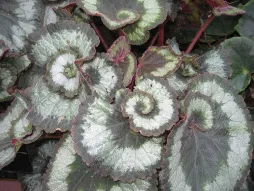
Begonia 'Escargot
Discover














